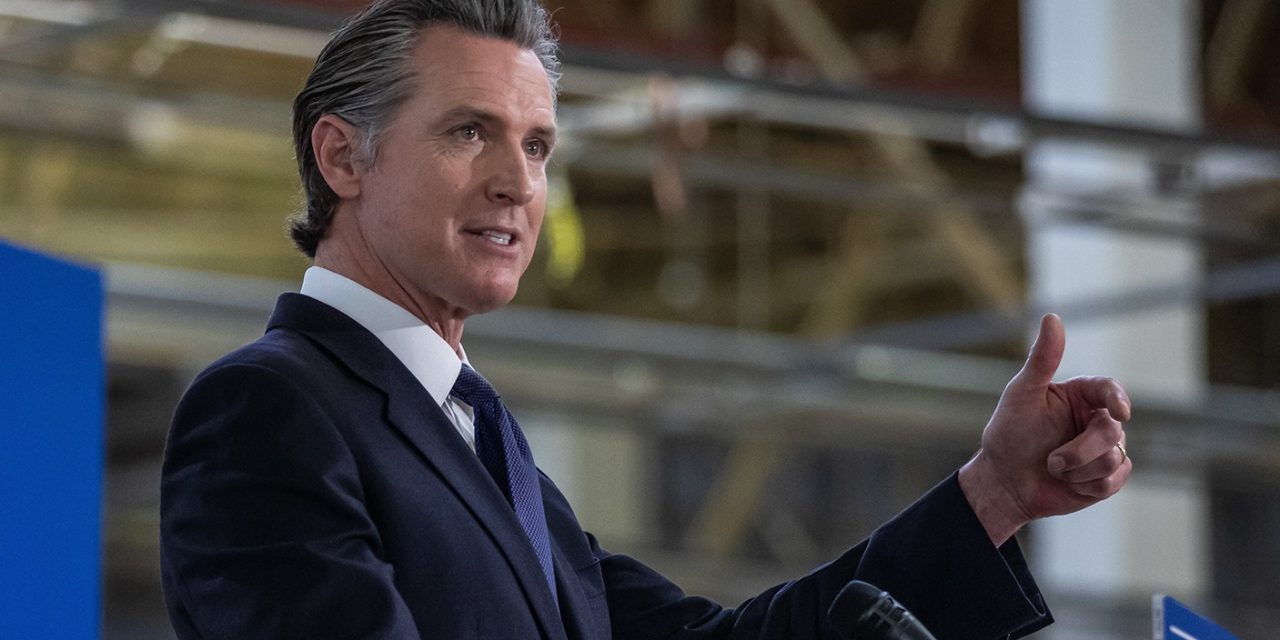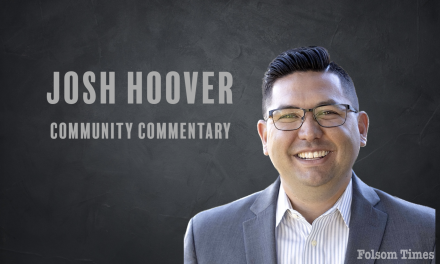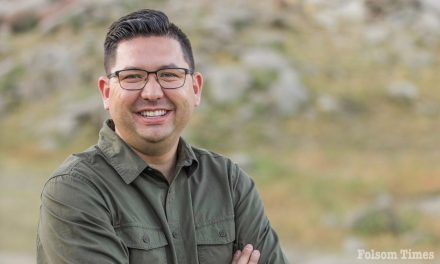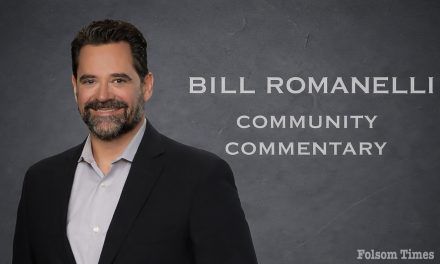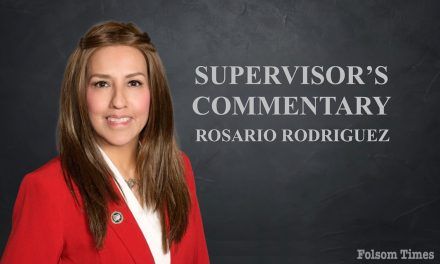Gov. Gavin Newsom speaks at San Quentin State Prison announcing that the facility will be transformed to focus on training and rehabilitation on March 17, 2023. Photo by Martin do Nascimento, CalMatters
Gov. Gavin Newsom’s State of the State tour to jump start his second term cost taxpayers at least five times more than the traditional prepared speech that launched his first, according to records obtained by CalMatters.
That’s the price of California’s governor seeking a new approach to push his agenda — a high-profile, highly choreographed four-day journey that spanned the state,each day focusing on one policy area.
“We’re just trying to do something to generate a little more energy so people understand what our priorities are,” he said on the fourth and final day of his March tour, which started in Sacramento, proceeded to the Bay Area and Los Angeles County and ended in San Diego.
Newsom’sFebruary 2019 speechto ajoint session of the Legislaturein Sacramento cost taxpayers a little less than $7,000, mostly travel expenses for two consultants and teleprompter services.
The 2023 tour cost at least $38,000,according to receipts obtainedthrough public records requests. The receipts include flights, hotel and transportation expenses for the governor and his staff.
Newsom’s office pushed back, saying the comparison between the traditional speech and the tour was “not apples to apples.”
“Not a lot of people pay attention to what’s happening in Sacramento on a daily basis,” Anthony York, spokesperson for the governor, told CalMatters on Tuesday. “A 30-minute speech in Sacramento, it’s over. And I think it adds to the disconnect between people and their government.”
“It’s important for any politician — whether that’s the Legislature, the governor or the president — to be out among their constituents to be talking about what their government is doing,” York added.
The governor’s office, which paid all the costs, did not provide an estimated budget for the high-profile tour.
But the total bill could be higher.
The receipts provided by the governor’s office don’t include security costs, which are paid for by the California Highway Patrol. CalMatters asked for those costs, but they were not available for this story.
The governor’s office said some of the travel costs in the receipts were not for the tour specifically because “other official business required some staff involved in the tour to extend their trip to join other events or meetings.” Large portions ofsome documents were redacted, to protect “personal privacy,” the governor’s office said.
Tracking the spending for the internal operations of the governor’s office can be difficult — because many expenses are offloaded to other departments, said Jon Coupal, president of the Howard Jarvis Taxpayers Association.
It’s also complicated to parse out expenses necessary for the governor to do his job from the political events, Coupal said.
One example: “If he flies down to the Central Valley to look at the Tulare Lake flooding, that’s legitimate. But is he gonna make some campaign stops in the lake? Probably … It’s very, very difficult to break down.”
The association tracks, and has sued, over outright political advocacy paid through the state budget, Coupal said, critiquingGov. Jerry Brownforcampaigning for Proposition 30, a 2012 ballot measure to increase the statewide sales tax rate.
The Newsom tour locations spotlighted different programs in which he wants to invest more state money to make progress on complex problems.
At Cal Expo in Sacramento, he toured tiny homes, another ofhis strategies to help people experiencing homelessness— which he called a “disgrace” and put at the top of his agendain his 2020 State of the State speech. At San Quentin State Prison, heunveiled a plan to “transform” education and skills trainingfor inmates as part of his prison reform efforts.
At a Kaiser Permanente warehouse in Downey, he launched the state’slow-cost insulin program, a significant step in his goal to lower prescription prices, and disclosed that he wants the state to make its own naloxone, used to save peoplefrom fentanyl overdoses. And at a hospital in San Diego, he discussed expanding behavioral health programs and proposed a $3 billion bond measure in 2024 toexpand psychiatric treatment centers.
At each stop, state administrators, advocates and state and local elected officials flanked the governor.
The events, which drew widespread media coverage, went far beyond what was required of Newsom. The governor’s only obligation, according to California’s Constitution, is tosubmit a letter to the Legislature— which he did three days after the tour ended.
While the tour promoted Newsom’s efforts as the state’s chief executive to tackle some of California’s most pressing problems, the attention also didn’t hurt any future political ambitions.
He insists he’s not running for president and he’senthusiastically backing President Biden’s 2024 reelection, but the governor is still amping up his national presence. Less than two weeks after the tour, Newsomlaunched a new Campaign for Democracyand jetted off to three Southern GOP states to meet with Democrats — a trip paid for by his newly formedpolitical action committee, seeded with $10 million in leftover money from his 2022 campaign.
